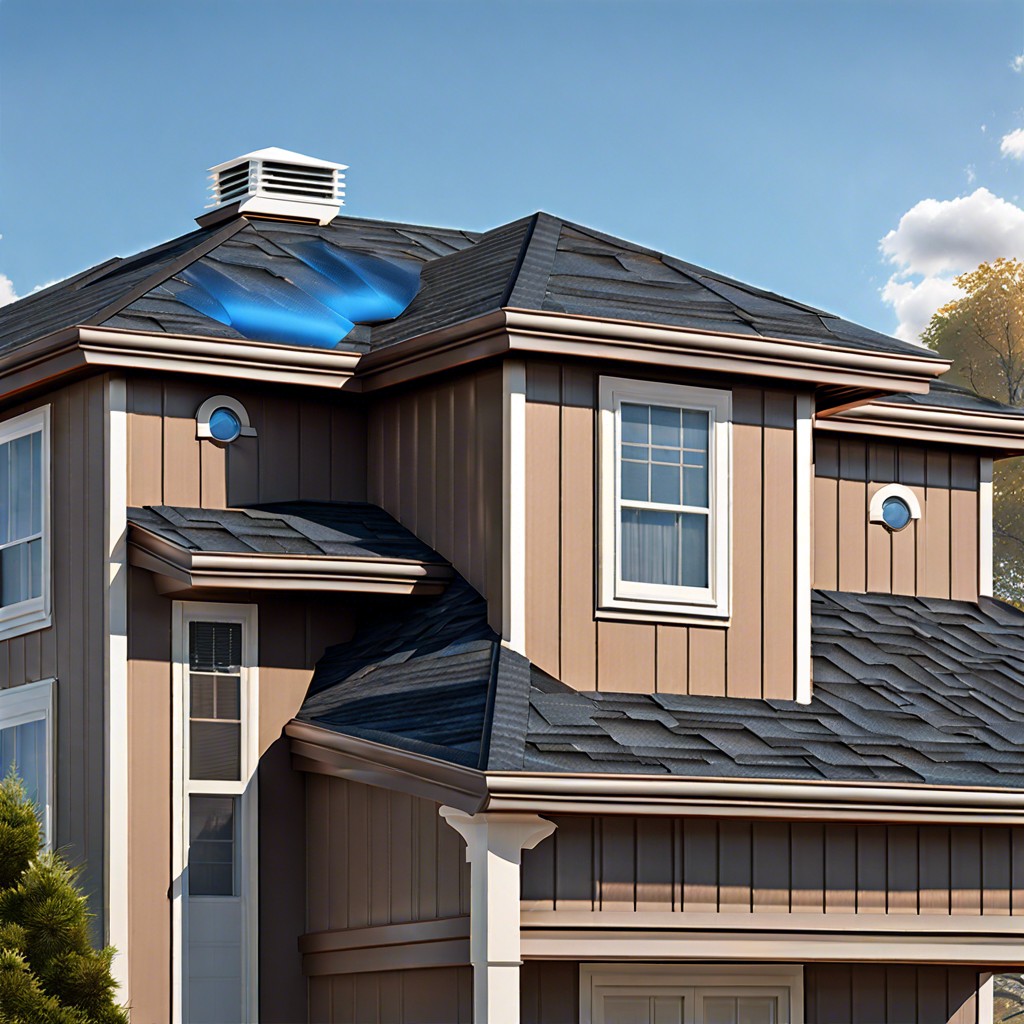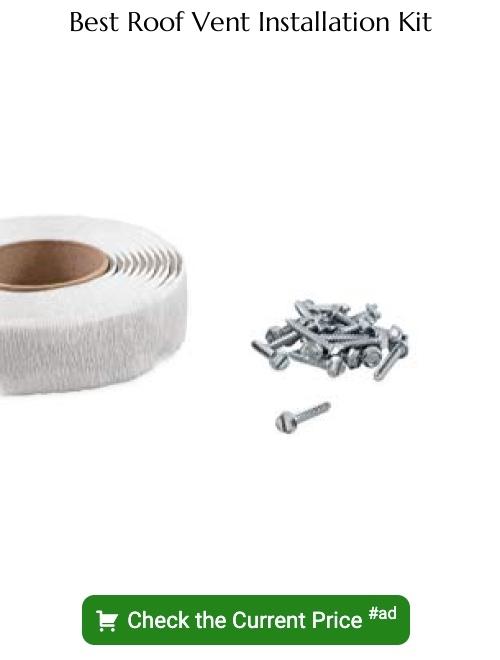Last updated on
Learn how to install roof vents effectively with this step-by-step guide.
Key takeaways:
- Roof vents regulate airflow and improve energy efficiency.
- Good roof ventilation prevents rot, mold growth, and ice dams.
- Installing roof vents with existing asphalt shingles requires cutting and securing the vent.
- Different types of roof vents include soffit vents, drip edge vents, ridge vents, static vents, gable vents, turbine vents, and powered vents.
- Intake vents like soffit vents and drip edge vents bring in fresh air, while exhaust vents expel stale air.
What Are Roof Vents?

Roof vents play a crucial role in maintaining the health of your home by regulating airflow in attic spaces. They help minimize heat buildup during hot weather and prevent moisture accumulation in cold conditions. Proper ventilation ensures the longevity of your roof by preventing rot and mold growth, and it can also improve energy efficiency by stabilizing indoor temperatures. These vents come in various forms, each designed to fit different roofing structures and ventilation needs.
The Importance of Good Roof Ventilation
Proper roof ventilation extends the life of your roof by preventing heat and moisture accumulation that can lead to rot and deterioration. It plays a critical role in reducing energy costs, especially during hot summer months, by allowing hot air to escape, thereby maintaining a cooler attic and reducing the load on your air conditioning system.
Additionally, it helps prevent ice dams in winter. This occurs when heat escapes, melts the snow on the roof, and then refreezes forming a dam that can cause leaks and damage to the roof structure and the home’s interior. Proper ventilation helps maintain a uniform roof temperature, thus preventing this cycle.
Moreover, good ventilation contributes to air quality inside your home. It minimizes the buildup of harmful substances like mold and mildew, which can thrive in a damp, poorly ventilated attic space. Ensuring a continuous flow of fresh air keeps these potential health risks at bay, creating a healthier living environment.
How to Install a Roof Vent With Existing Asphalt Shingles
First things first, gather your tools: a utility knife, tape measure, pry bar, hammer, and a drill. You’ll also need roofing nails and a new vent.
Start by locating the area on your roof between two rafters. This is the spot where you’ll install your new vent. Use the tape measure to find the center point between them and mark this spot.
Next, outline the size of the vent opening directly on the shingles using your utility knife. Be careful to cut only through the shingles and not into the wooden roof deck beneath them.
Once you’ve cut through the shingles, use the pry bar to gently lift and remove them. You should now see the bare roof deck.
Now, it’s time to cut through the roof deck. Using the same outline, make the cut with a saw, making sure it’s just large enough for the vent to fit snugly.
Position the vent over the newly cut hole and secure it by nailing through its flange into the roof decking. Ensure the vent is even and the flange sits flush against the roof surface.
Finally, replace the surrounding shingles. You may need to trim some to fit around the new vent. Secure them with roofing nails, and don’t forget to apply a bit of roofing sealant around the vent to seal any gaps.
Voila! Your roof is now equipped to handle whatever moisture comes its way.
Types of Roof Vents and Their Installation
Intake vents play a crucial role in bringing fresh air into your attic. Common types include soffit vents, which are installed in the eaves, and drip edge vents, which fit under the shingles at the edge of the roof. Both are critical for regulating temperature and moisture.
Exhaust vents, on the other hand, expel the used air. Ridge vents, sitting discreetly along the roof peak, are favorably known for their ability to ventilate evenly across the roof. Static vents, often seen as round, square, or rectangular dome shapes on roofs, are simple yet effective. Gable vents, placed at the end walls of an attic, also assist in fostering cross-ventilation.
For those in need of something a bit more vigorous, turbine vents, which spin with the breeze to pull air out, and powered vents, which use electricity to expel air, offer enhanced ventilation capabilities. Proper installation is key to the success of these systems, often demanding precision to avoid leaks and maximize airflow.
Each vent type comes with its set of installation specifics which, if followed correctly, can substantially improve your home’s ventilation efficiency.
Intake Vents: Soffit Vents, Drip Edge Vent
Soffit vents are usually installed in the eaves of your roof. They allow fresh air to flow into your attic at the lowest point. This cool air pushes the hotter air upward, effectively decreasing your home’s overall temperature and reducing the load on your air conditioning system.
Drip edge vents are a savvy solution if your roof does not have enough eave space for standard soffit vents. These are installed along the edges of your roof, right under the shingles. They provide an alternative pathway for fresh air to enter the attic, enhancing overall attic ventilation without major roof modifications.
Both types are essential for creating a balanced attic ventilation system. They ensure that the inflow of air matches the outflow, which can only be achieved through correctly installed exhaust vents. This synchrony between intake and exhaust is crucial for effective attic ventilation, helping prevent moisture buildup and heat accumulation.
Related
- How to Vent a Bathroom Fan Through the Roof: Simple Step-by-Step Process
- Eaves of a House: Understanding Their Purpose and Importance
- Roof Flashing: Understanding Its Importance and Installation
- Remove Snow from Roof: Safe and Effective Methods for Homeowners
- Signs of Roof Leak in Attic: Identifying and Addressing Water Damage

